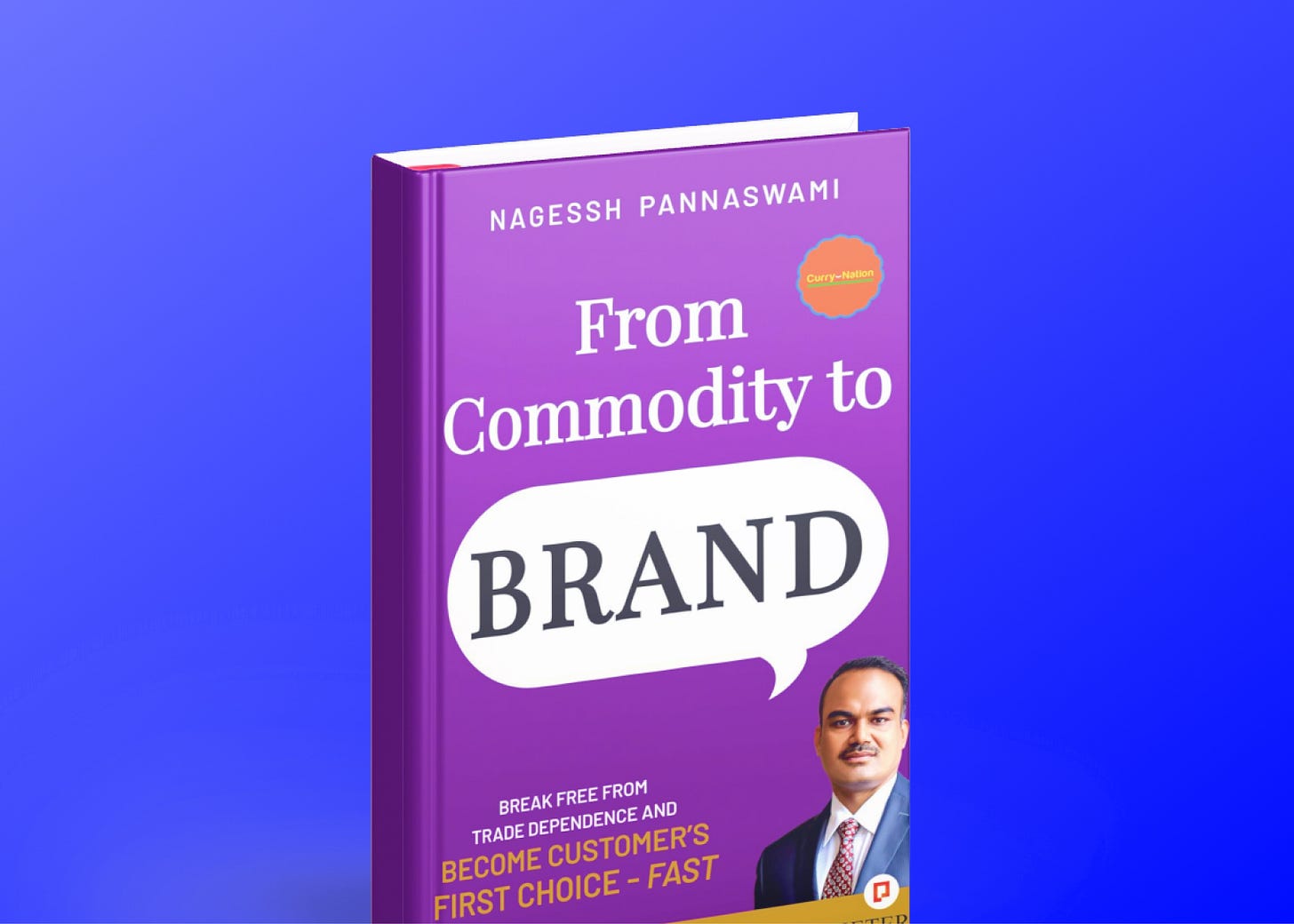From Commodity to Capital Multiplier
Why Branding Is the Most Underleveraged Growth Lever in PE‑Led Transformation
Over the last two decades, I’ve had the privilege of working with more than 30 businesses across sectors that many would label “uncool” - plywood, adhesives, milk, bathroom cleaners, and lubricants. These are categories with product parity, low customer involvement, and entrenched distribution plays. And yet, time and again, I’ve seen how perception, not just the product, reshapes value.
As the founder of Curry Nation—a brand transformation agency focused on owner-managed commodity businesses—I’m often invited into boardrooms post-fact. Growth is flat, a larger competitor is eating into market share, or the fund is preparing for exit. And the founder or investment team wants to know: “What do we do now?”
My answer, invariably: think about brand perception. My book - From Commodity to Brand touches on the same topic:
The Mid‑Market India
India’s mid‑market, comprising companies with ₹100 to ₹500 crore in turnover, is at a tipping point. These companies have built scale through cost efficiency, trade relationships, and operational hustle. But now, buoyed by a record ₹8,761 crore raised across 240 SME IPOs in 2024, and a sharp uptick in public market interest in regional and sectoral winners ¹ these firms are under the spotlight.
The question is - “What story will you tell the market?”
I’m an honest believer of this: operational metrics will get you a ₹100 crore company. Brand perception is what gets you to ₹1,000 crore.
Commodity Isn’t the Problem. Perception Is.
In every meaningful client engagement, we start by walking into stores, supermarkets, hardware counters or dealer showrooms. And every time, it’s the same: multiple options with near-identical specs in categories like wires, plywood, floor cleaners, adhesives.
What separates the 3× multiple from the 10× isn't the product, it’s perception.
It’s whether the customer asks for you by name.
It’s whether the channel wants to stock you without needing incentives.
It’s whether you’ve earned the right to command a premium.
What Branding Actually Changes in PE-Led Growth
In private equity circles, the classic playbook centers around operational efficiency: tighten procurement, expand distribution, optimize working capital. All valid. But very few funds account for the compounding power of a brand in the value creation journey.
Let me break down what we’ve seen while working with midmarket companies:
When customers ask for a product by name, it moves through the system with less reliance on trade discounts or incentives.
Strong brands tend to attract higher multiples because they signal pricing power and durability.
Branding reduces price comparisons. Customers pay for trust, not just product features.
A brand that’s known opens doors - distributors and retailers are more willing to take it on.
A clear brand makes it easier to introduce new products under the same umbrella without starting from scratch.
The Good Home Story
Take Good Home, a home hygiene brand operating in the most cluttered of shelves - bathroom cleaners, air fresheners, kitchen hygiene. When they approached us, the products were functional, the distribution was decent. But there was no distinct identity.
When we worked with them, we didn’t touch the formulation. We touched the story. From “bathroom cleaner” to “Freshroom,” we reframed the category with a tone and posture the trade and consumer hadn’t seen before.
Within three years, the brand saw:
Revenue growth from ₹30 Cr to ₹75 Cr
Expansion into newer retail formats and geographies
Internal alignment leading to more R&D investment
A sales team with a compelling story to tell
Brand-led momentum that attracted recognition within the group
This was in a low-margin, low-involvement category. That’s the power of repositioning.
Common Branding Myths I See in PE
There are a few misconceptions I often hear from fund managers:
“Branding is advertising.” It isn’t. Branding is the story you choose to tell. Advertising is just the amplifier.
“It’s for B2C.” Not true. Tata Tiscon, Ambuja Cement, SKF Bearings, Kirloskar - these are B2B brands that close deals faster because buyers trust them.
“We’ll do branding after we scale.” By then, the perception of ‘commodity vendor’ is already hard-set. Early moves compound.
“Let’s start with a new logo.” That’s like pouring water into a leaking bucket. Brand identity must follow brand strategy.
Branding is not decoration. It’s differentiation. Done right, it aligns internal teams, earns channel leverage, creates pricing headroom, and builds a better exit story.
Why PE Should Care Now
I understand why funds hesitate. Branding isn’t immediately P&L visible. It can be seen as slow. It requires conviction. There can be friction from the top management of the company.
When outcomes are not easily measured, branding is seen as less reliable than hard levers like procurement savings. But it doesn’t have to be comparative, branding has to go hand in hand with operational levers.
Branding done right can de-risk exits by improving investor narratives and increasing asset salience in crowded sectors.
The average PE cycle is 3–5 years. That’s enough time to build brand pull if you start early and embed strategy into the business DNA. Some leading funds have now begun integrating brand advisors into the transformation process.
The Final Question
Ask yourself:
Are we buying into a business? Or are we buying into a brand?
The former gets you revenue. The latter gets you resilience.
Because in today’s India, where capital is abundant and competition is everywhere, it’s attention, affinity, and customer preference that are scarce.
Those who build brands - own them.

